Upskilling and reskilling: How companies are closing the skills gap

From the OECD to the World Economic Forum (WEF) and The Linux Foundation, everyone agrees: upskilling and reskilling are the answer to the shortage of skilled workers and the skills gap in technical industries. This trend was already foreseeable 10 years ago, which was reported not only by the WEF shortly after the turn of the millennium. The Linux Foundation's 2024 State of Tech Talent Report (see Fig. 1) brings together the most important points in a wonderfully compact and visual way. And the OECD breaks it down into three things: SKILLS-FIRST HIRING, MICRO-CREDENTIALS and INCLUSIVE OUTREACH.
We covered skills-first or skills-based hiring in our last Insight and inclusion in recruiting in the Insight before that. ‘Micro-credentials’ (roughly ‘mini-certificates’) are short, targeted learning activities that offer learners an opportunity to retrain and further educate themselves quickly and efficiently. The buzzwords are reskilling and upskilling – retraining and advanced training. That is what this article is about today.
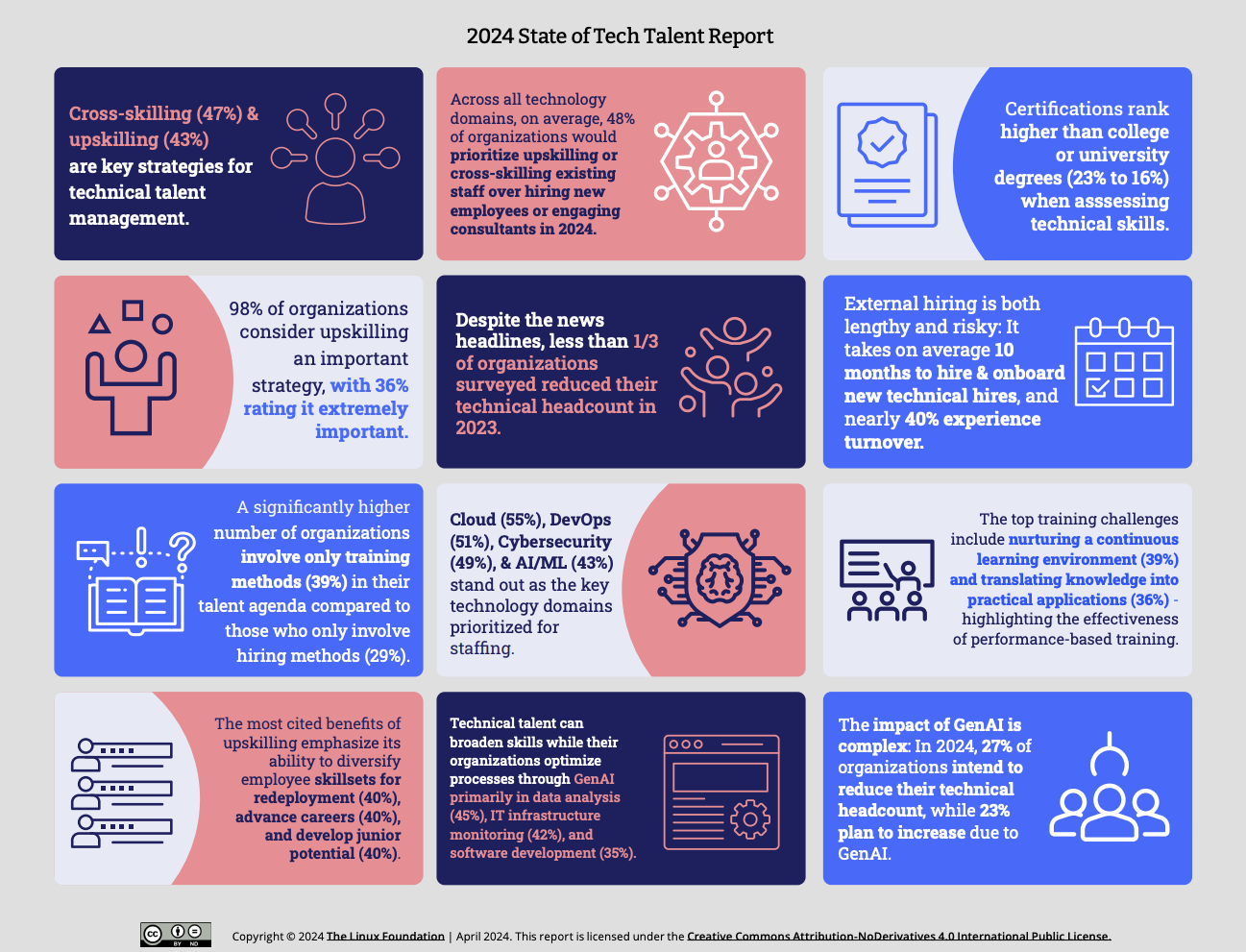
Status Quo Reskilling and Upskilling
Let's first lay out the most important findings from our research. The Linux Foundation concludes that upskilling or reskilling will be at the top of the talent agenda in all areas of technology in 2024. A full 98% of companies consider advanced training to be an important strategy for meeting their need for technical professionals. 36% rated it as extremely important and 38% as very important. Only 2% said it was not that important.
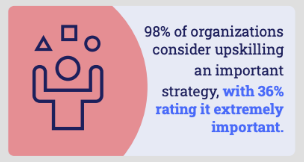
The most frequently cited benefits of upskilling are the opportunity to diversify employees' skills for redeployment (40%), advancing careers (40%), helping younger employees expand their skills (40%), and providing a more cost-effective way to increase technical expertise (35%). So upskilling solves a whole range of current and future problems.
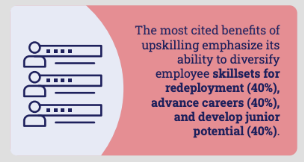
(Fig. 3: 2024 State of Tech Talent Report, The Linux Foundation)
And the areas targeted by upskilling and reskilling are, unsurprisingly, cloud, DevOps, cybersecurity and AI/ML.
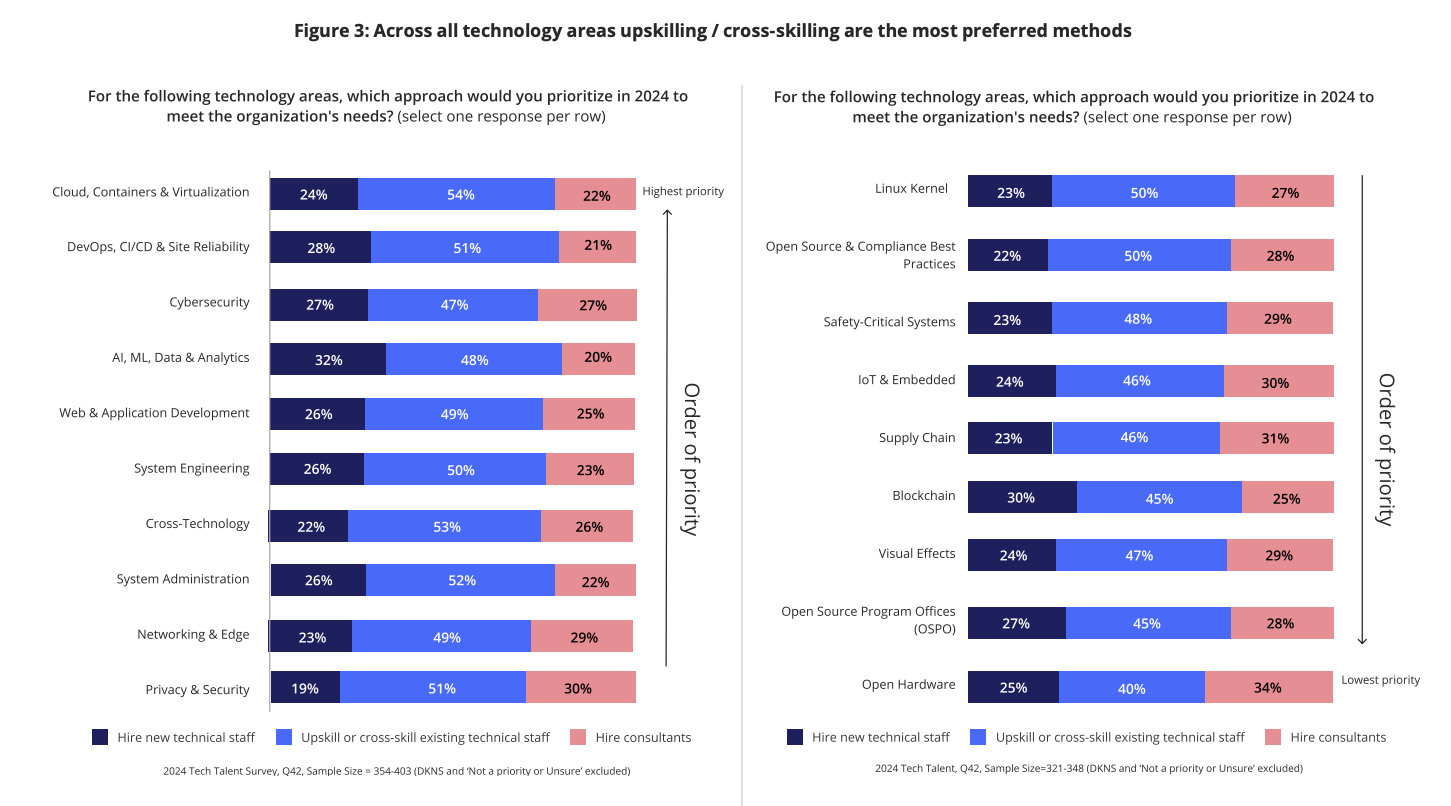
So, what about the employees – are they interested in advanced training and retraining? The study ‘The State of Upskilling and Reskilling in 2024’ by TalentLMS and Workable provides new research results on this topic.


(Fig. 4 & 5: The State of Upskilling and Reskilling in 2024, TalentLMS and Workable)
The figures presented in the study are encouraging – 71% of employees say that they want to update their skills more often and 77% say that learning new skills gives them a sense of purpose. So employees are motivated.
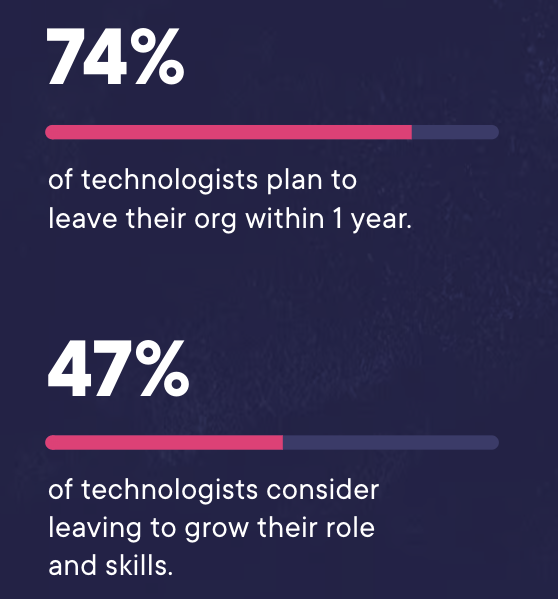
At the same time, the wave of ‘The Great Resignation’ from post-pandemic times has not yet fully subsided – fully 74% of technical employees plan to leave their current organisation within a year. 47% of them want to expand their career or skills (see Fig. 6).
Companies need to act – because the pressure is coming from a shortage of skilled workers, from opportunity costs and also from within their own ranks. But what is the best way to implement this in practice?
This is how IT SMEs can provide advanced training and retraining
Small and medium-sized software development companies also want to offer advanced training and retraining – but they often don't have the same extensive resources and means as large technology companies. That's why here are a few basic and cost-effective strategies that SMEs can use to implement upskilling and reskilling.
Create a culture of continuous learning
📌 Why it's important: The ‘Future of Jobs Report 2023’ states that 44% of core skills will change by 2027 – this means that your company must promote a learning-oriented mindset today.
✅ How to implement it:
- Allow 2-4 hours per week for learning.
- Use Lunch & Learn sessions where team members share knowledge from current projects or courses.
- Set incentives (e.g. bonuses, career opportunities or recognition for employees who complete training programmes). That being said, pursuing personal growth is the highest motivation (see Fig. 2), i.e. it is also in the self-interest of your employees.
Example: Atlassian encourages engineers to invest 10% of their time in their professional growth, including side projects and certifications.
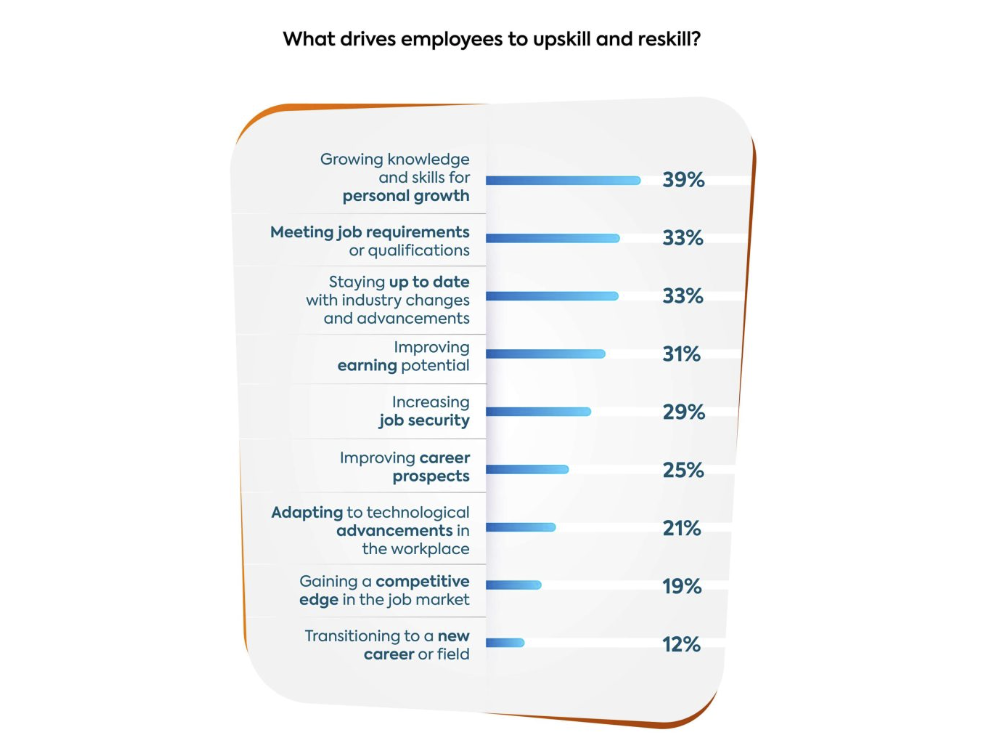
Use free and affordable resources for learning
📌 Why it's important: While SMEs don't have huge budgets for training and advanced training, there are cost-effective training options. Quite frankly, it has never been cheaper to access expertise.
✅ How to implement it:
- Use free or low-cost platforms such as Coursera, Udacity, Pluralsight, LinkedIn Learning or Khan Academy for structured learning. Many well-known companies also offer valuable content on YouTube.
- Take advantage of training programmes from providers such as Microsoft, AWS, Google and IBM, which often offer free or discounted training for SMEs.
- Provide employees with a learning budget (e.g. €500 per year for books, courses or certifications). Here, too, you can take advantage of special offers for companies.
Example: AWS offers free cloud education programmes for SMEs that want to improve their developers' skills in cloud technologies through AWS Skill Builder.
Implement peer learning and mentoring
📌 Why it's important: SMEs can't always afford external training staff, but internal knowledge sharing is an effective (and free) tool. And it should be a fundamental part of every company!
✅ How to implement it:
- Introduce a buddy system in which senior engineers act as mentors to younger developers.
- Rotate team members across projects to help them learn new technologies.
- Use pair programming and code reviews as learning opportunities.
Example: Companies like Buffer and Basecamp use mentorship programmes to upskill junior talent quickly and without formal training costs.
Offer microlearning/micro-credentials instead of long training courses
📌 Why it's important: Traditional training programmes are often time-consuming. Microlearning (short, focused sessions) allows employees to learn without significantly interrupting their workflow.
✅ How to implement it:
- Create or use small learning modules (e.g. short videos, programming exercises, problem-solving tasks).
- Incorporate learning into daily work – assign small research tasks or problem-solving as part of projects.
- Encourage employees to set aside 15–30 minutes each day for structured learning.
Example: Companies like Shopify are using microlearning via Slack bots, where employees receive daily coding challenges aligned with their learning objectives.
Partner with local universities or bootcamps
📌 Why it's important: This one's a real hack! SMBs can tap into emerging talent and access tailored training programmes without significant costs. And they may pay you, depending on what you can negotiate.
✅ How to implement:
- Partner with local universities or coding bootcamps to offer internship and hire programmes.
- Even if you can't partner, offer employees access to accelerated bootcamps in new technologies as a development alternative
- Use government or industry-sponsored funding programmes to subsidise training costs.
Example: Small and medium-sized companies in Germany use training programmes from the Chamber of Industry and Commerce or the Fraunhofer Society to help software engineers gain advanced training in AI and data science.
Use AI and automation to optimise learning
📌 Why it's important: AI-based learning tools can personalise advanced training programmes for employees and ensure that they focus on relevant skills.
✅ How to implement it:
- Use AI-powered learning platforms such as LinkedIn Learning, Coursera AI or Degreed to recommend personalised training paths.
- Implement chatbots or AI tutors to answer technical questions in real time.
- Conduct automated skill assessments/tests to determine the need for further training.
Example: Siemens uses AI-driven learning platforms to customise employee training and ensure that developers learn the most relevant skills. Thanks to AI, advanced training is better and cheaper than ever, and you don't have to reinvent the wheel – find an offer that suits you.
Turn retraining into a retention strategy
📌 Why it's important: Personal growth is a strong self-motivator. Your employees will thank you for it and it is also an expression of appreciation.
✅ How to implement it:
- Offer opportunities for career change – enable employees to move into new IT roles (e.g. QA testers moving to DevOps, traditional IT administrators learning cloud engineering).
- Publicly recognise employees who have undergone training and highlight internal development as a company strength. This will help to build your corporate brand.
Example: Accenture retrained half of its workforce within three years, reducing recruitment costs and improving employee retention. This means that you save costs elsewhere and often end up spending less overall.
Conclusion: advanced training and retraining are possible for every company.
While larger tech companies have deep training budgets, SMBs can still build a robust learning culture. Leverage affordable training, peer mentoring, and AI-driven learning tools for personalised learning. Use skills-based hiring to bring the right people with new skills on board, to ensure that your workforce can learn from each other, and combine this with the many reasonably priced learning opportunities and AI that are currently available. A culture of continuous willingness to learn, as well as planned and structured training initiatives, lay the foundation for this.











